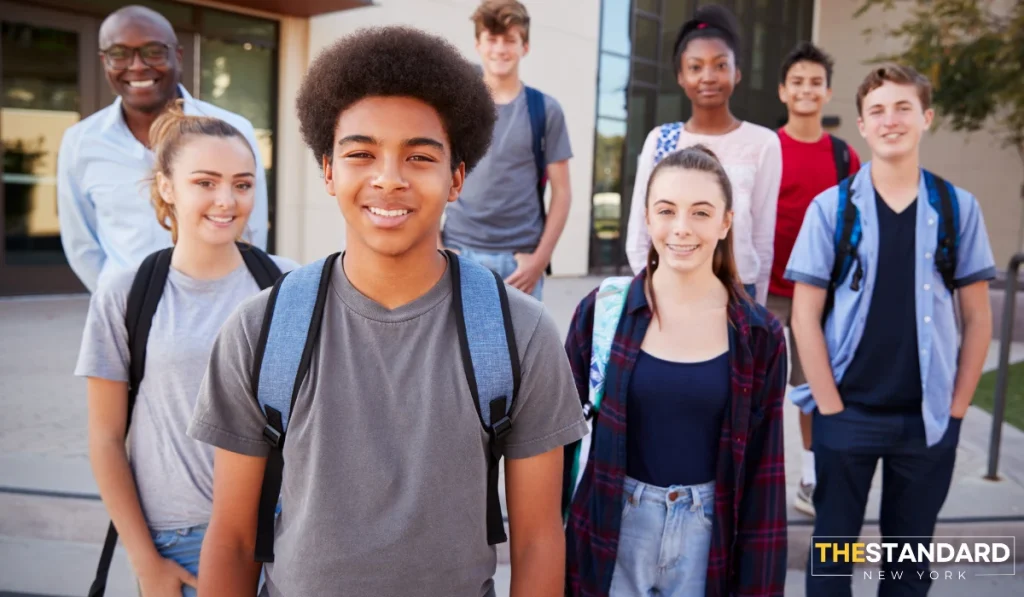In today’s classrooms, there’s a growing but often silent challenge that many students face daily: social anxiety. It’s more than just being shy. For some students, speaking up in class, making eye contact, or even walking into the lunchroom can trigger paralyzing fear and self-doubt.
Research shows that social anxiety affects up to 7% of youth at any given time, with symptoms often beginning in late childhood or adolescence. Left unaddressed, it can lead to isolation, academic struggles, and long-term mental health issues. However, schools can be powerful allies in changing that trajectory if they know how to respond. Here’s how educators and school staff can recognize the signs and implement research-backed strategies to help students thrive socially and emotionally.
1. Tap into Cognitive Behavioral Therapy (CBT) Principles
CBT is a gold-standard treatment for anxiety. While schools can’t replace clinical therapy, trained school counselors or psychologists can use CBT-inspired interventions to support students.
-
Psychoeducation: Teach students what social anxiety is and how it works. When students understand the cycle of anxious thoughts and physical reactions, they’re better equipped to take control.
-
Cognitive Restructuring: Help students challenge thoughts like “Everyone will laugh at me” and replace them with balanced perspectives: “Most people are focused on themselves, not me.”
-
Exposure Activities: Gradually introduce social situations. Maybe start with a one-on-one conversation, then a group discussion, and eventually, a presentation. It’s about building confidence step-by-step.
-
Relaxation Techniques: Equip students with deep breathing, mindfulness, and grounding exercises to manage their body’s stress response.
2. Use Gradual Exposure in the Classroom
You don’t have to be a therapist to help students work through their fears.
-
Participation Ladders: Start with private journaling, then partner sharing, then small group talks, and eventually whole-class discussion.
-
Low-Stakes Check-ins: Kick off class with simple prompts like, “Use one word to describe your mood today.” This helps students practice speaking in a safe way.
These steps create a safe and progressive structure that respects a student’s anxiety while nudging them forward.
3. Teach Social Skills Explicitly
Many socially anxious students struggle because they don’t know how to start conversations or interpret body language.
-
Social Cues: Analyze scenes from movies or books to teach facial expressions, tone, and posture.
-
Assertiveness Training: Use role-play to practice setting boundaries, asking questions, or disagreeing respectfully.
-
Classroom Agreements: Create norms that value every voice, like “Challenge the idea, not the person,” or “One mic at a time.”
4. Modify the Environment to Reduce Anxiety Triggers
Sometimes, the structure of a classroom can make anxiety worse.
-
Assigned Groups: Take the pressure off by choosing partners or teams for students.
-
Advance Notice: Don’t spring a class presentation on them; give them time to mentally prepare.
-
Safe Spaces: Provide a quiet room or space where students can reset if overwhelmed.
-
Participation Alternatives: Let anxious students show their understanding through a written piece or one-on-one check-in instead of public speaking.
5. Help Students Reframe Negative Thoughts
Students with social anxiety often magnify situations; they assume the worst will happen.
-
Normalize failure as part of growth. Model making mistakes and laughing it off.
-
Help them test their fears: “What’s the worst that could happen if you ask a question?” Then work through it.
-
Teach mindfulness to bring them back to the present, rather than worrying about past slip-ups or future humiliation.
6. Implement School-Based Programs
Programs like SASS (Skills for Academic and Social Success) are designed specifically for school settings. These include:
-
Social skills workshops
-
Exposure exercises
-
Collaboration with teachers and families
Even peer support groups or “lunch bunch” sessions led by counselors can make a major impact.
7. Build a Network of Support
It takes a village; supporting anxious students isn’t just a counselor’s job.
-
Train teachers to spot the signs and respond with empathy.
-
Engage parents to reinforce coping strategies at home.
-
Use peer mentors or buddy systems to create natural support within the school day.
Social anxiety isn’t always obvious. The quiet kid in the back may be silently battling a storm of self-judgment. But when schools take a proactive, compassionate approach, they can change the trajectory of a student’s life.





